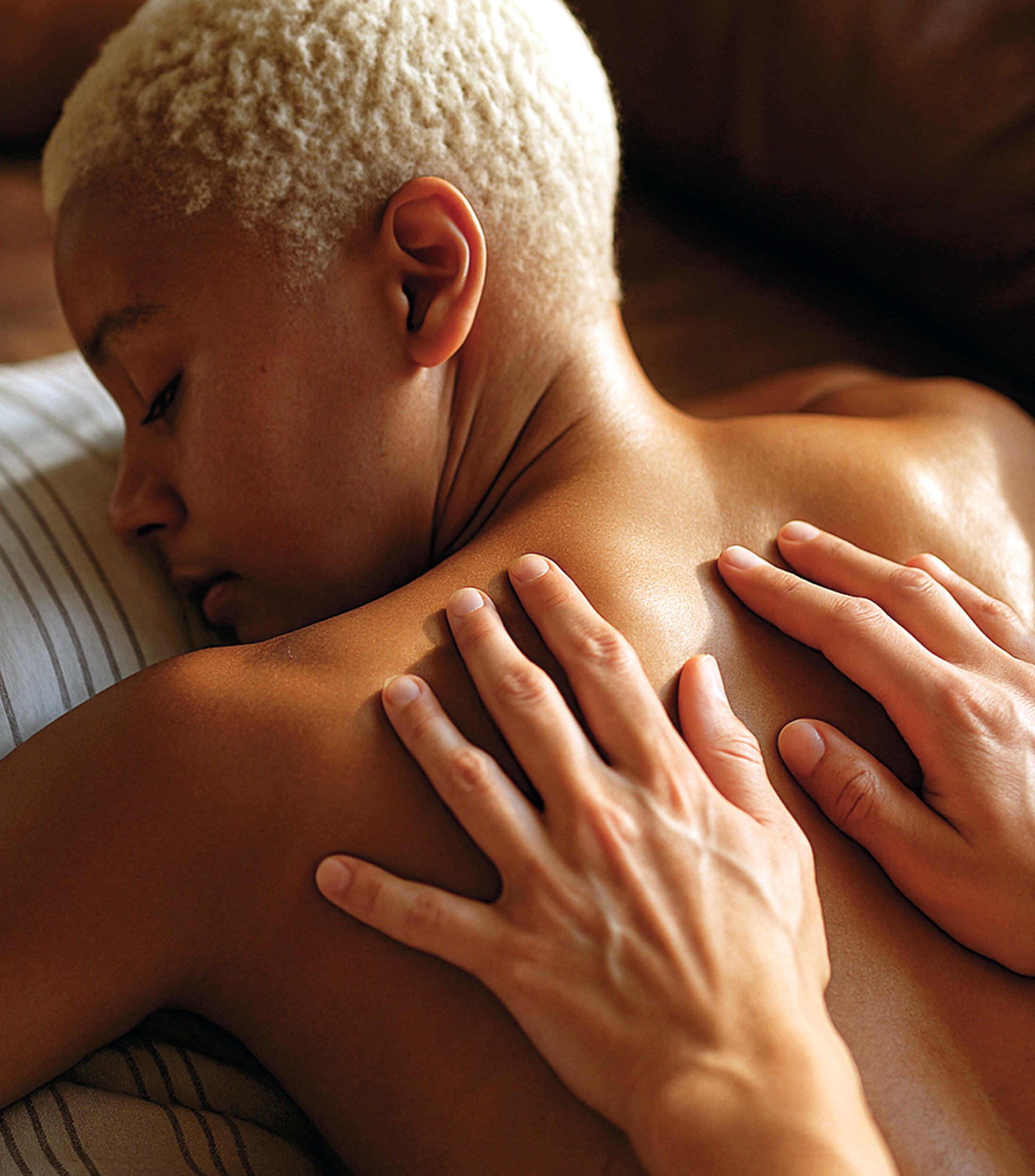As if the pay gap between men and women weren't bad enough, there's an orgasm gap, too. For years, it's been a well-known fact that women climax less often than men during sex. And frankly, that's messed up.
The orgasm gap is an issue we've been circling for years, shrouded in societal taboos around sex and masturbation. But recently, we've started making progress toward closing it.
What Is the Orgasm Gap?
It isn't just an expression — there's scientific evidence that women have fewer orgasms during sex with men. In a 2018 study of over 1,000 heterosexual newlywed couples, 87 percent of men consistently reported orgasms during sex. That number for women — 49 percent.
Another study from 2014 shows a similar disparity: 85 percent of men involved in the study said they orgasmed consistently during sex, compared to just 63 percent of women. Yet another study from 2018 puts the numbers at 75 percent of men orgasming regularly, but only 33 percent of women.
So what gives?
Why is there such a vast disparity in people getting off during sex? And what can we do to fix it?
What's Causing the Orgasm Gap?

A multitude of factors come into play when talking about sex and orgasms. For one, all the above studies looked at penile-vaginal sex, which by its nature is much more likely to result in one-sided orgasms.
The numbers back this up. When homosexual women were surveyed, the number of people reporting regular orgasms jumped to 86 percent. That indicates the problem isn't that women can't get off — it's that men don't know the right way to do it.
"It's Just More Difficult for Women"
Despite society's gradual progress toward sex positivity, many myths around sex and orgasms keep screwing with our sex lives. One of the biggest? That the female orgasm is "elusive" and more difficult by nature to achieve.
Not only is this untrue, but it also makes the female orgasm sound like something David Attenborough is tracking through the wild. It isn't that female orgasms are hard to find. It's that we don't talk enough about the truth of women's pleasure to understand it genuinely.

Women are also — explicitly and implicitly — discouraged from exploring their bodies to learn what works for them. Sex and relationship expert Eleanor McKenzie put it this way in a 2020 interview with Insider:
"In my opinion, one particular thing is standing in the way of progress: there is a wide acceptance that teenage boys wank prolifically... It's treated as a joke, but it's accepted. Teenage girls, by contrast, are discouraged, both actively and subconsciously, from exploring masturbation and therefore learning about what gives them an orgasm."
Read: How To Be a Better Listener in a Relationship?
Again, the data backs this up. A study from 2017 reports a substantial masturbation gap between men and women. In the study, 25 percent of men surveyed said they masturbate every day compared to 8.7 percent of women. A full 20 percent of women said they'd never masturbated in their lives.
Articles promising "tips and tricks" to elicit the "elusive female orgasm" embed the (wrong) idea further in our minds that it's just more complicated for women to attain sexual pleasure. In reality, men and women take the same amount of time to orgasm during masturbation, according to data from the Kinsey Institute. That number? Just four minutes. If you're more of a visual learner, you can watch Professor Laurie Mintz's TED talk on the subject.
Read: What Is Considered a Healthy Sex Life?
If more men understood that most women need clitoral stimulation to orgasm and knew the anatomy of the clitoris itself, they'd be much better able to help their partner climax.
Mainstream Porn Neglects Women's Pleasure
Another driving force behind the orgasm gap is a lack of quality sex education coupled with the prevalence of porn. A combination that can create an unrealistic idea of sex in people's minds.
While more and more studios are creating porn focusing on women's pleasure and/or equal pleasure between men and women, most mainstream porn doesn't depict sex that way. Instead, the emphasis is placed almost solely on men's pleasure.
This kind of porn is often overblown, played for shock value, and shows men having an orgasm nearly every time. The men in these scenes get more oral sex than the women, for a more extended period of time, then jackhammer away until they get off, and the scene ends.
Sex educator Victoria Beltran described porn's role in our sex lives like this in an article on the orgasm gap for TED's website:
"Porn typically only depicts male orgasm, and much of it shows some violence against female partners. It absolutely can skew how some men view their women partners during the act of sexual intercourse — as a giver of pleasure, not a receiver. And women who view straight porn are also seeing the same thing."
Read: Everything you need to know about Ethical Porn
A skewed focus on men's pleasure and lack of understanding of women's bodies make for lousy sex. Many men don't understand that foreplay is important and that most women need it to orgasm.
Women's Pleasure Is Still Treated as Optional

Because the conversation around sex — when we talk about it at all — has focused on men's pleasure for so long, women's pleasure is often treated as an optional extra. Yet, women are still expected to pleasure men.
Women feel more pressured to give sexual satisfaction on dates or in relationships, often forgoing their own. In the TED article, author Peggy Orenstein said she found women felt "entitled to engage in sexual behavior, but not necessarily to enjoy it" when she interviewed multiple women for her book Girls & Sex: Navigating the Complicated New Landscape.
Orenstein said she had college-age women report, for example, that they gave a man oral sex at the end of a date because they felt pressure to provide satisfaction even if they didn't want to have sex.
How Can We Close the Orgasm Gap?
We're getting better at talking about sex as a society, but we've still got work to do if we're going to close the orgasm gap. And we should be working to close it. Everybody deserves a fulfilling and healthy sex life, full stop. So what can we do?
-
For starters, we have to acknowledge the problem. Men and women need to talk to one another about their sexual needs and desires. There needs to be an equal emphasis on women's pleasure and how their bodies attain that pleasure.
-
Sex education needs to include frank discussions of mutual pleasure and the importance of trust. Learning lessons like this early on can normalize consent and help everyone enjoy sex responsibly instead of feeling shame. "Boys have erections and ejaculations, and girls have an unwanted pregnancy," we need to widen the scope of the conversation.
- We also need to have better education around porn. In and of itself, porn isn't a bad thing. But many people are exposed to it too young — usually by age 14 — to fully understand it for what it is: a performance. And it's often the first time they're introduced to sex.
There's scripting, discussions of consent, and preparation going on behind the scenes. The actors consciously try to have sex in a way that looks good on camera, which doesn't usually line up with what's actually sexually satisfying.
Instead of ending with the (usually inadequate) sex education we get in school, our education should be ongoing. We should learn about our bodies, and our partner's bodies, and how they experience pleasure. If we consider our partner's pleasure as important as our own, both people will end up having better sex.
Seeking out credible sex education sources on our own will help us understand our bodies better. Men who educate themselves on women's anatomy can satisfy their partners better and more often. They're also better able to help a female partner understand their body if they're less experienced.
Read: Intimate Massage for Better Health and Stronger Orgasms
Masturbation is also great. Getting to know their bodies better by themselves, whether with their hands or toys like wands or vibrators, can give women a sense of agency over their sexual pleasure. They know what they like, and they can tell their partners how to get them off—a win-win.
Closing the the Orgasm Gap with Sex Toys
It's time to shake off the old, stubborn myths and puritanical beliefs we have about sex. Women's pleasure is essential. Men should know how a woman's body works and understand the importance of foreplay.
Both men and women should be open to talking to one another and admitting when we don't know something — after all, we're not telepaths.
References
The Significance of the Female Orgasm: A Nationally Representative, Dyadic Study of Newlyweds' Orgasm Experience. (June 2018). The Journal of Sexual Medicine.
Variation in orgasm occurrence by sexual orientation in a sample of U.S. singles. (November 2014). The Journal of Sexual Medicine.
Differences in Orgasm Frequency Among Gay, Lesbian, Bisexual, and Heterosexual Men and Women in a U.S. National Sample. (January 2018). Archives of Sexual Behavior.
Female sexuality and the 'orgasm gap' are coming to the forefront of conversations during worldwide lockdowns. (May 2020). Insider.
Sexual diversity in the United States: Results from a nationally representative probability sample of adult women and men. (July 2017). PLOS One.
Sexual Behavior in the Human Female. (1953). The Kinsey Institute.
A new sexual revolution for orgasm equality by Laurie Mintz. (July 2019). TED YouTube channel.
We need to talk about the orgasm gap — and how to fix it. (June 2019). TED website.
Unwanted and Wanted Exposure to Online Pornography in a National Sample of Youth Internet Users. (February 2007). Pediatrics.
 Vibrators
Vibrators Toys for Women
Toys for Women Toys for Men
Toys for Men Couples & Partners
Couples & Partners



Share
Slippery When Wet: How To Have Shower Sex That's Steamy and Safe
A Guide To Relationship Cuddling